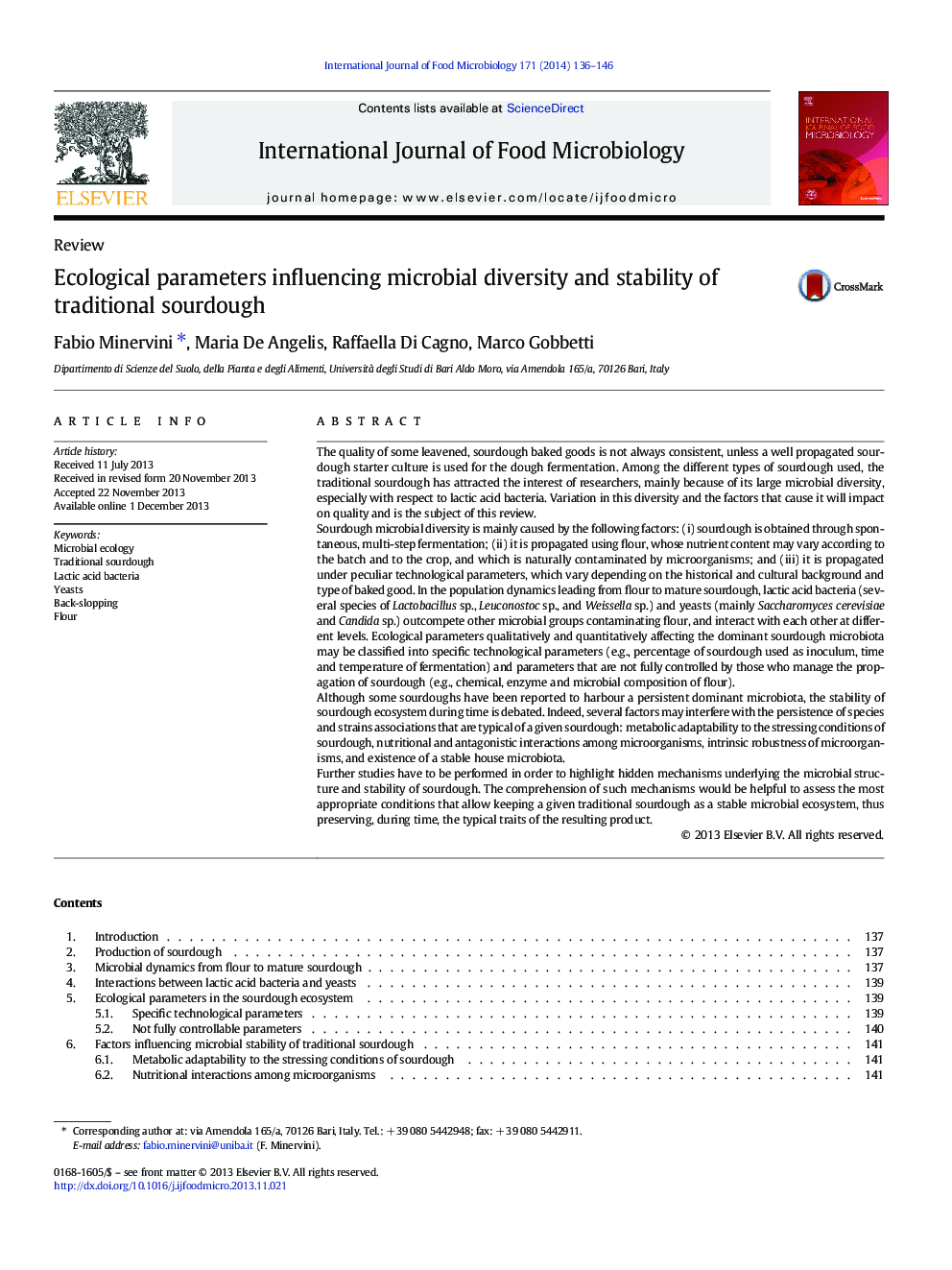| کد مقاله | کد نشریه | سال انتشار | مقاله انگلیسی | نسخه تمام متن |
|---|---|---|---|---|
| 6290056 | 1616611 | 2014 | 11 صفحه PDF | دانلود رایگان |
- Lactic acid bacteria and yeasts dominate traditional sourdoughs.
- Different specific technological parameters lead to sourdough microbial diversity.
- Microbial stability is not ensured by application of constant technology parameters.
- Flour and house microbiota affect microbial stability of traditional sourdough.
- Succession of microorganisms causes variations of sourdough performances over time.
The quality of some leavened, sourdough baked goods is not always consistent, unless a well propagated sourdough starter culture is used for the dough fermentation. Among the different types of sourdough used, the traditional sourdough has attracted the interest of researchers, mainly because of its large microbial diversity, especially with respect to lactic acid bacteria. Variation in this diversity and the factors that cause it will impact on quality and is the subject of this review.Sourdough microbial diversity is mainly caused by the following factors: (i) sourdough is obtained through spontaneous, multi-step fermentation; (ii) it is propagated using flour, whose nutrient content may vary according to the batch and to the crop, and which is naturally contaminated by microorganisms; and (iii) it is propagated under peculiar technological parameters, which vary depending on the historical and cultural background and type of baked good. In the population dynamics leading from flour to mature sourdough, lactic acid bacteria (several species of Lactobacillus sp., Leuconostoc sp., and Weissella sp.) and yeasts (mainly Saccharomyces cerevisiae and Candida sp.) outcompete other microbial groups contaminating flour, and interact with each other at different levels. Ecological parameters qualitatively and quantitatively affecting the dominant sourdough microbiota may be classified into specific technological parameters (e.g., percentage of sourdough used as inoculum, time and temperature of fermentation) and parameters that are not fully controlled by those who manage the propagation of sourdough (e.g., chemical, enzyme and microbial composition of flour).Although some sourdoughs have been reported to harbour a persistent dominant microbiota, the stability of sourdough ecosystem during time is debated. Indeed, several factors may interfere with the persistence of species and strains associations that are typical of a given sourdough: metabolic adaptability to the stressing conditions of sourdough, nutritional and antagonistic interactions among microorganisms, intrinsic robustness of microorganisms, and existence of a stable house microbiota.Further studies have to be performed in order to highlight hidden mechanisms underlying the microbial structure and stability of sourdough. The comprehension of such mechanisms would be helpful to assess the most appropriate conditions that allow keeping a given traditional sourdough as a stable microbial ecosystem, thus preserving, during time, the typical traits of the resulting product.
Journal: International Journal of Food Microbiology - Volume 171, 3 February 2014, Pages 136-146
